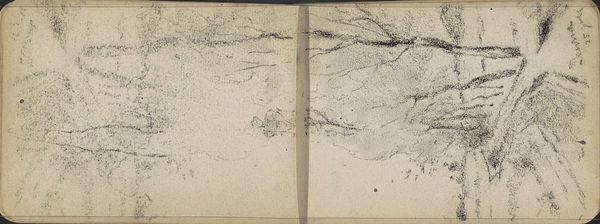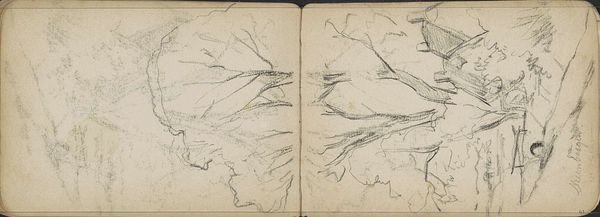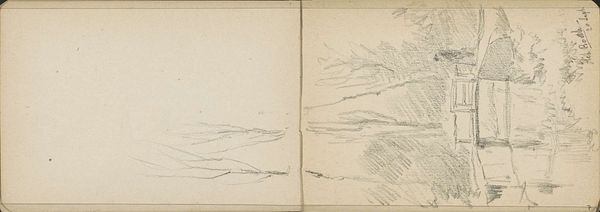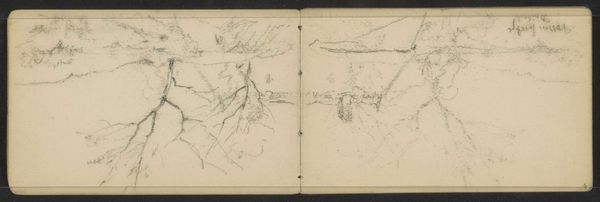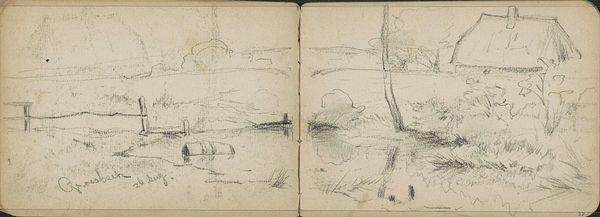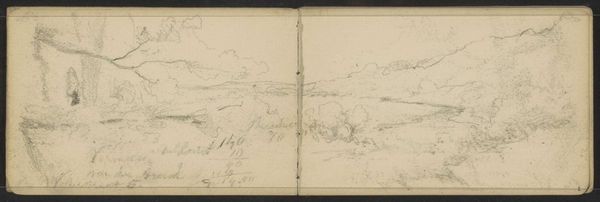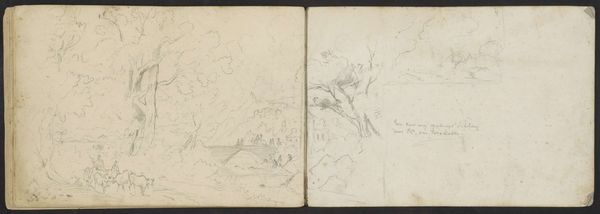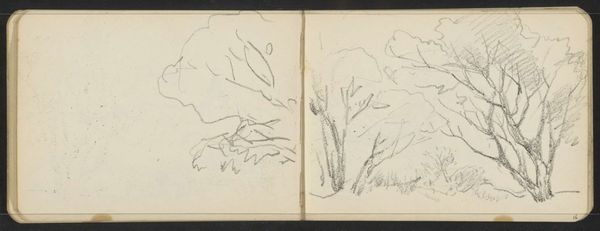
drawing, pencil
#
drawing
#
landscape
#
pencil
#
realism
Dimensions: height 104 mm, width 179 mm
Copyright: Rijks Museum: Open Domain
Curator: Here we have a pencil drawing by Willem Cornelis Rip, "Man met paard op de Beukelsdijk," likely created between 1895 and 1896. It feels intimate, doesn't it? Like a stolen moment from a sketchbook. Editor: It's certainly understated. A landscape but stripped down to its barest bones. The sweeping branch really anchors the composition. What's your sense of the context, especially considering the artist? Curator: Well, Rip was part of the Hague School, right? That meant he was really tuned into depicting everyday life and rural scenes, prioritizing atmosphere over detail. This drawing seems to encapsulate that philosophy so directly! It feels less like a painting and more like feeling how that old place existed. Editor: Absolutely. The choice of rendering the Beukelsdijk, in pencil sketch invites reflection on how landscapes evolve—a commentary on urbanization potentially, the way 'nature' is always being negotiated in our everyday spaces. Curator: I agree completely. And there’s a subtle tenderness in the way he captures the man and horse. They seem connected, almost mirroring each other. It makes me think of that quote – "through our relationship with horses, we connect with the world". Is this part of how people related in late nineteenth-century landscapes? Editor: Definitely. The work provides this pastoral view and also implicates the socio-economic relationships that enable leisure or labor depending who we look at in the work, human and animal. But given the period it makes you question to who this landscape truly 'belonged'. Curator: And the stark simplicity actually makes it even more potent, doesn't it? Rip could have chosen a more grandiose approach, but instead he's chosen to invite us to reflect and feel in the world, in quietude with horse, tree and human relationship. Editor: Exactly, the minimalist approach encourages critical thinking on social narratives, what we often choose not to picture or what the artist wants you to ponder while the sketchbook offers a personal lens of the time and place. Curator: So it is really is up to each individual person to see how art history connects with their present lives and histories! I love it when a piece does that, pulls us in but keeps us wondering. Editor: Right! And it demonstrates the power art has to prompt these broader societal questions through the delicate artistry within it.
Comments
No comments
Be the first to comment and join the conversation on the ultimate creative platform.


